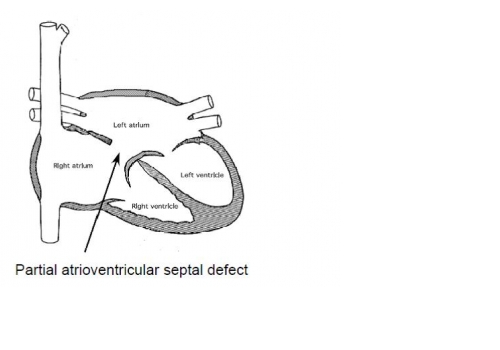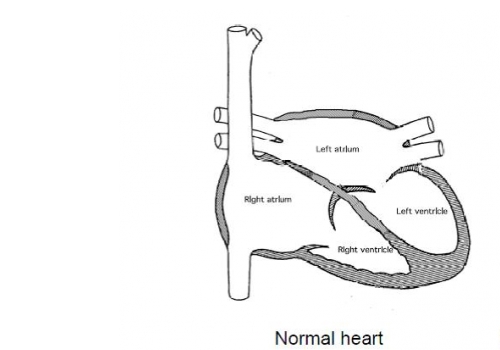Child
- About
- Meet The Team
- Conditions
- Aortic Stenosis
- Atrial Septal Defect
- Coarctation of the Aorta
- Complete Atrioventricular Septal Defect
- Heart Murmur
- Interrupted Aortic Arch
- Normal Heart
- Partial Atrio-Ventricular Septal Defect
- Patent Ductus Arteriosus
- Pulmonary Atresia with Intact Ventricular Septum
- Pulmonary Atresia with Ventricular Septal Defect
- Pulmonary Stenosis
- Right Aortic Arch
- Small Ventricular Septal Defect (Muscular)
- Small Ventricular Septal Defect (Perimembraneous)
- Tetralogy of Fallot
- Transposition of the Great Arteries
- Ventricular Septal Defect (Large)
- Dental Practitioners: Dental care in children at risk of Infective Endocarditis
- Looking after your child’s oral health
- Coming for an echocardiogram
- Outpatient Appointments
- Preparing to Come into Hospital for Surgery
- On Admission to the Children's Ward
- Visiting
- Operation Day
- Children's Intensive Care
- Daily Routine on Intensive Care
- Managing your child's discomfort
- Going Home
- Children's Cardiac MRI Scan
- Cardiac Catheter
- Reveal Device
- Ablation Procedure
- Pacemakers
- INR and Warfarin
- Lifestyle and Exercise Advice
- School Advice
- Attachment
- Yorkshire Regional Genetic Service
- Advice & Support Groups
- Your Views
- Monitoring of Results
- Second Opinion
Partial Atrio-Ventricular Septal Defect
This is a serious heart abnormality which consists of a hole between the two small pumping chambers (atriums). The hole also affects the inlet valves of the heart. Normally there is a separate inlet valve in the right side of the heart (the tricuspid valve) and a separate inlet valve in the left side (the mitral valve). With atrioventricular septal defect (AVSD) the middle part of the two valves is shared between the left and right sides of the heart – often referred to as a bridging leaflet or a common valve. Normally the inlet valves open to let the ventricles fill with blood and then close to allow all the blood to be pumped to the body and the lungs through the main arteries leaving the heart. The abnormality of the inlet valves in AVSD often stops the valves (particularly the mitral valve, on the left side of the heart) closing properly, so it is not watertight when it closes.


Tests
An ultrasound scan of the heart (an “echocardiogram”) is required to make the diagnosis, and to watch for any new problems developing as the child grows.
Treatment
Children with partial AVSD usually look perfectly well when they are young, but if the defect is not repaired it can eventually (after many years) cause permanent damage to the heart and the lungs. Surgery is usually recommended before school and sometimes before the age of 1 year. The surgery is complicated because the surgeon has to close the hole at the same time as dividing the common inlet valve into separate right and left parts. The main problem with surgery is that the left sided inlet valve (mitral valve) always leaks to some extent after the hole is closed (this is called mitral regurgitation). If the mitral valve only leaks a little this may not matter and further treatment may never be necessary. However if the mitral valve leaks badly it can be such a serious problem that the child may die, or that further major surgery is needed to repair or replace the mitral valve.
Replacing the mitral valve (a metal valve is normally used) in young children is a difficult procedure and carries a further risk to the child‘s life. Further major surgery is always necessary after valve replacement in young children because they outgrow the valve. The risk of a child dying at surgery to repair a partial AVSD will depend to some extent on how well the mitral valve works before the operation, but overall the risk is low (less than 2%).
Follow up
It is important for all patients with a repaired AVSD to be seen in the cardiology outpatient department to make sure that mitral regurgitation does not become worse as time goes by. In addition, a small proportion of children can develop narrowing of the outflow of the left ventricle (subaortic stenosis) after repair of the AVSD. This may need surgical treatment.
General advice for the future
Patients with repaired AVSD generally live normal active lives, including all kinds of sport. Most have a normal exercise tolerance but if there is significant mitral regurgitation it is usual to be more breathless than normal on exercise.
All patients with a repaired AVSD will be at risk of infection in the heart (called endocarditis). Such infections may be caused by infections of the teeth or gums, so it is very important to look after your childs teeth and gums carefully and visit the dentist regularly (every 6-12 months). Ear or body piercing and tattooing are best avoided as they carry a small risk of infection which may spread to the heart.
